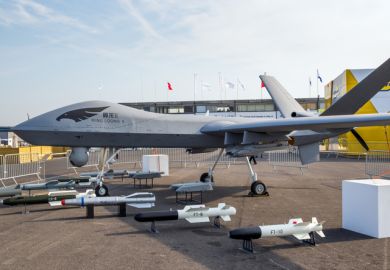Australia gains far more than China from the two countries’ collaborative research in the key field of artificial intelligence, a study suggests.
A new report says China is easily Australia’s primary partner in AI research, contributing to 31 per cent of its AI publications – streets ahead of Australia’s second biggest collaborator, the US, at 11 per cent.
Australian researchers co-author only about 3 per cent of China’s scientific output in the field. “While China-affiliated researchers play a prominent role in Australia’s AI research, Australia-affiliated researchers are far less crucial to China,” argues the report, by the Australia-China Relations Institute (ACRI) at the University of Technology Sydney.
AI lies at the centre of concerns that Australian academics may be contributing to Chinese military technology, and consequently working against their country’s national interests, through collaborative research with China.
Universities require permits to share and publish applied research in areas with military applications. In February, the federal government resisted a Department of Defence push to extend these controls to a broader suite of research topics in fields including artificial intelligence.
However, the Australian Strategic Policy Institute (ASPI) has highlighted AI’s applications in defence and surveillance technologies. ASPI listed AI as a key interest of China’s defence industry conglomerates – many working with universities in the West, including Australia – in a November report warning of the risks of collaborating with more than 100 Chinese research institutions.
ACRI acting director James Laurenceson, who co-authored the new report, said that almost two-thirds of Australia’s most cited AI publications in 2017 had featured researchers affiliated with China or Hong Kong.
“If you suddenly shut down that collaboration, Australia’s output of AI knowledge takes a very sharp dive,” Professor Laurenceson warned.
He has also argued that a blanket ban on collaboration in AI would be unworkable, saying that such a broad and interdisciplinary field defies easy definition.
The ACRI report cites 2018 McKinsey research suggesting that the adoption and absorption of AI will account for around half of Australia’s economic growth until 2030. It says that Australia’s ability to create and use AI knowledge will largely depend on its capacity to connect with the US and China, the global leaders in the field.
“In the absence of home-grown technology giants like Google and Tencent, universities are positioned as Australia’s key actors in conducting research and creating AI knowledge,” it adds.
It says that Chinese researchers at institutions affiliated with the People’s Liberation Army contributed to just 3 per cent of AI research papers involving Australian and Chinese authors in 2018, up from none in 2012 but down from 6 per cent in 2015.
“There is no obvious upward trend in the volume of such collaborations,” it says.
Register to continue
Why register?
- Registration is free and only takes a moment
- Once registered, you can read 3 articles a month
- Sign up for our newsletter
Subscribe
Or subscribe for unlimited access to:
- Unlimited access to news, views, insights & reviews
- Digital editions
- Digital access to THE’s university and college rankings analysis
Already registered or a current subscriber?








